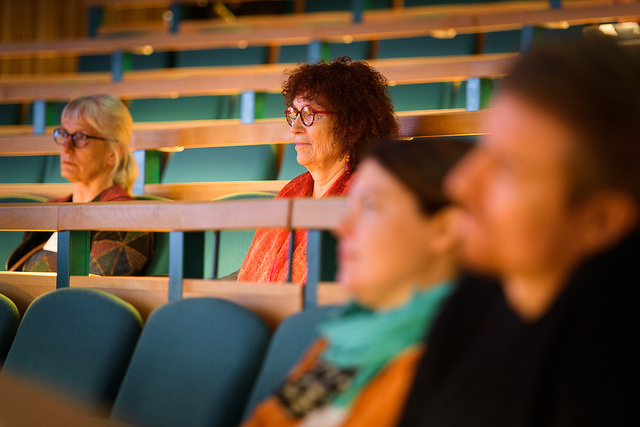When online, people draw on the limited cues they have available to create for themselves an imagined audience. This audiences shapes our social media practices and the expression of our identity. While institutions encourage scholars to go online, and many scholars perceive value in online networks themselves, limited research has explored the ways that scholars conceptualize online audiences.

Audiences by NordForsk/Stefan Tell
In a recent paper, we were interested to understand how scholars conceptualize their audiences when participating on social media, and does that conceptualization impacts their self-expression online. Below is a short summary of the results. The full study is here: Veletsianos, G., & Shaw, A. (2018). Scholars in an Increasingly Open and Digital World: Imagined Audiences and their Impact on Scholars’ Online Participation. Learning, Media, & Technology, 43(1), 17-30.
We used a qualitative approach to this study, interviewing 16 individuals who represented a range of academic disciplines and roles. Data were generated from two sources: semi-structured interviews with each participant, and examination of the social media spaces they used (e.g. blogs, Facebook, Twitter).
Participants identified four specific groups as composing their social media audiences: (1) academics, (2) family and friends, (3) groups related to one’s profession, and (4) individuals who shared commonalities with them. Interviewees felt fairly confident that they had a good understanding of the people and groups that made up their audiences on social media, but distinguished their audiences as known and unknown. The known audience included those groups and individuals known to interviewees personally. The unknown audience consisted of members whom participants felt they understood much about but did not know personally. Interviewees reported using their understanding of their audience to guide their decisions around what, how or where to share information on social media. All participants reported filtering their social media posts. This action was primarily motivated by participants’ concerns about how postings would reflect on themselves or others.
The audiences imagined by the scholars we interviewed appear to be well defined rather than the nebulous constructions often described in previous studies. While scholars indicated that some audiences were unknown, none noted that their audience was unfamiliar. This study also shows that a misalignment exists between the audiences that scholars imagine encountering online and the audiences that higher education institutions imagine their faculty encountering online. The former appear to imagine finding community and peers and the latter imagine scholars finding research consumers (e.g., journalists).

Leave a Reply